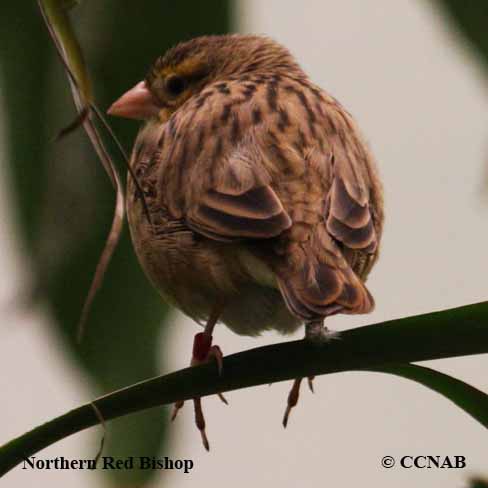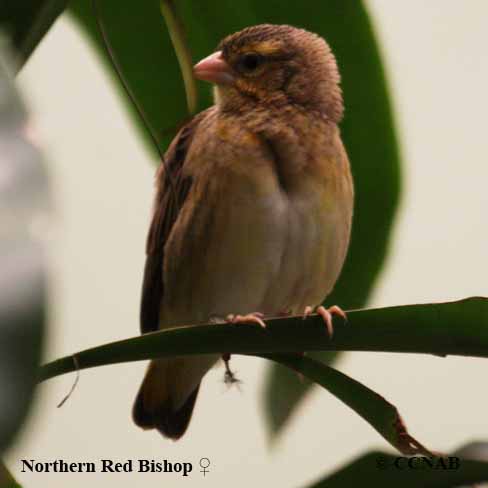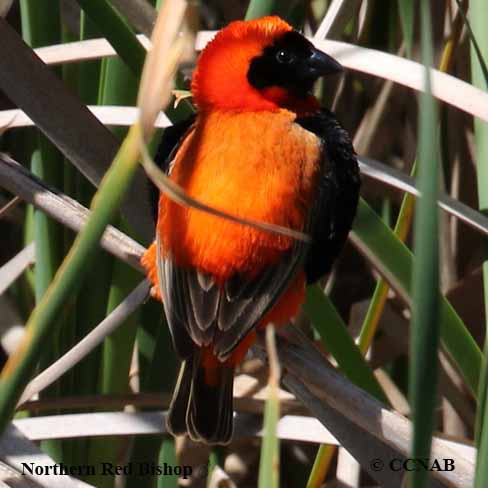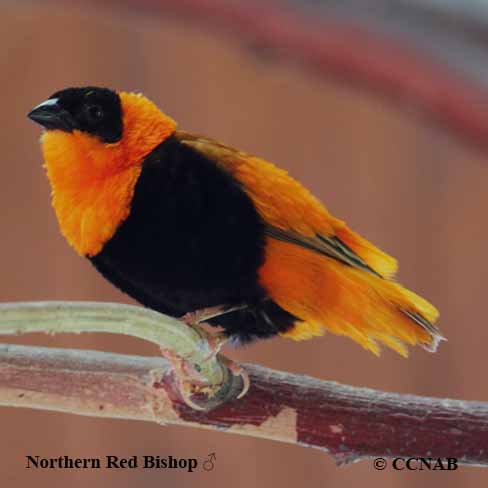North American Bird Search Box
This search box can be used to find bird species using bird's english or french name, or to identify bird by its 4 letter Alpha Code
Field Guide for all the Birds of North America
Northern Red Bishop
4 Letter (english names) Alpha Code: NRBI (2)
Euplecte franciscain
Euplectes franciscanus
Information, images and range maps on over 1,000 birds of North America, including sub-species, vagrants, introduced birds and possibilities
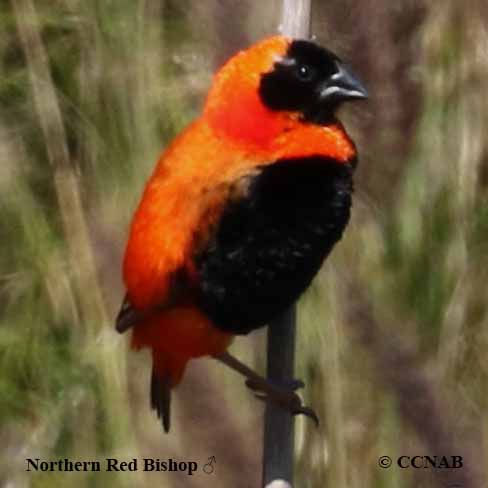
Life, Habitat and Pictures of the Northern American Exoctic Birds
| B L | W W | W | Family | Latin Name |
|---|---|---|---|---|
| 4.5" 11.4cm | 6.5" 16.5cm | 0.3oz 8.5g | Ploceidae | Euplectes franciscanus |
- Summer
- Year Around
- Winter
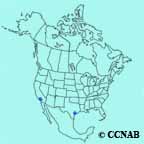
Species: The Northern Red Bishop was once known as the Orange Bishop (Euplectes franciscanus). It is an exotic bird that is native to northern Africa and is a member of the weaver family. This bird species has been reported in Miami, Houston, Phoenix and Los Angeles. In most cases, these are escaped bird sightings. There is a breeding colony in Houston, Texas.
Distinctions: Sexually dimorphic, the male has a reddish orange body, black face and crown, black breast and brown wings and tail tip. The female is sparrow-like in appearance, light brown overall, with slightly streaked breast, juvenile similar to the female and the male, when the male is in non-breeding plumage.
Voice: Soft single note, sparrow-like in sound.
Nesting: Four to five aqua blue eggs per clutch. Nest is constructed on to a group of stronger plant stems, woven into a hive-like enclosure, using grass and hay-like materials. Male may have multiple female mates at the same time.
Distribution: Seen in the southern states, where the temperatures are somewhat similar to their native homes. Reported across the southern states, mostly likely escaped birds. There is a breeding colony located in the city of Houston, Texas and another one in Phoenix, Arizona.
Reference to Other Bird Site:
ABA - American Birding Association This site represents an organization that maintains official records of all birds species that have been proven to have been seen inside the perimeters of the North American Continent and the surrounding bodies of water. Regular revised versions are posted to keep the bird list current at all times. This is the list used by all serious birders over their lifetime. You may be aware of the movie called the "Big Year". It was with this list that all the competing birders used in an attempt to set a new record as to how many bird species that could be seen by an individual birder in one calendar year.
